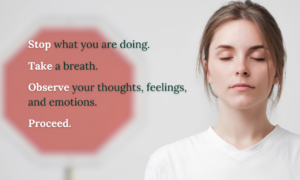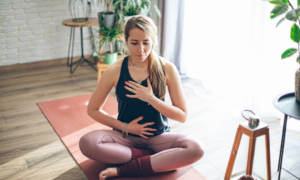How to Start A Wellness Routine
Written by Serena Jain, Mindfulness Specialist
A wellness routine is a holistic approach to taking care your physical, emotional and spiritual health. Wellness routines are the implementation of a daily routine that integrate areas such as sleep, nutrition, exercise, work, social life, community engagement, spirituality and self-care activities such as mindfulness, meditation, yoga, nature walks, journaling and many more.
Having a wellness routine can support your wellbeing in many ways. These routines can be highly supportive on challenging days and provide an added boost of energy and positivity on good days.
To create a wellness routine, begin with reflecting on something that you have always wanted to do or something that you feel you need to do such as an exercise routine or a daily mindfulness practice.
When you are ready to begin, it is helpful to start small and set goals for yourself. You can even think about setting SMART goals for yourself, by following this simple goal setting practice:
Specific: Set a specific goal
Measurable: Make sure the goal can be measured
Achievable: Make sure the goal is something you can achieve
Realistic: Make sure the goal is realistic
Time bound: Set time parameters for your goal
Here are some examples of smart goals for developing a wellness routine:
- Practice mindfulness meditation Monday, Wednesday and Friday at 8AM for 10 minutes using audio guidance for two weeks.
- Practice mindful eating Tuesday and Thursday at breakfast for the month of April.
- Go for a brisk walk Tuesday, Wednesday and Saturday at 5PM for 30 minutes in April.
There are many brief and simple self- care practices that can be integrated into a wellness routine to create space and balance in daily life. These short practices can be utilized to intentionally step out of the worried mind or a stressful moment and return to the present moment. When we are present we have a firmer grasp on all of our options and resources which often help make us feel better.
Here are a few brief self – care practices to try:
Three Deep Breaths:
Take full, deep breathes by following these steps:

- Begin by taking a deep breath and hold it for 5 seconds, then exhale and allow all tension, frustration, or whatever you’re experiencing to flow out of your body.
- Take another deep breath, as deep as you can, and hold it again for 5 seconds, and as you exhale imagine blowing out all of your stress, so that your body can restore itself.
- Take a third deep breath and hold it for 5 seconds, and now as you exhale sink into the moment feeling more relaxed and present.
STOP:
STOP is a stress response tool which can help alleviate stress. STOP is a short practice you can weave into your day to create space to step out of the worried mind and back into the present moment.
Practice STOP by following these steps:

S – Stop what you are doing.
Interrupt your thoughts and actions with the command ‘stop!’ and literally take a pause on whatever you’re doing.
T – Take a breath.
Bring your awareness to your breathing. Breathe normally and naturally and follow your breath coming in and out of your nose. You can even say to yourself “in” as you’re breathing in and “out” as you’re breathing out if that helps with concentration. Take some breaths.
O – Observe your thoughts, feelings, and emotions.
Bring your attention to what is on your mind. Become an observer of your thoughts, emotions, feelings and physical sensations in the body. What thoughts do you notice? What emotions are surfacing? Then notice your body. Are you standing or sitting? How is your posture? How does your body feel? Any aches and pains. Tune in and stay with whatever arises for a few moments. Observe mindfully consider how you’d like to respond.
P – Proceed
Proceed with something that will support you in the moment. Whether that is talking to a friend, rubbing your shoulders, having a cup of tea, or taking a small action. Consider what you need in the moment as your reflect on what would be a helpful response to this situation. Narrow down your focus and take it one small step at a time.
Belly Breathing:
Belly breathing is a practice that helps bring awareness to the breath at the belly. This skill is particularly effective at calming anxiety. When we breathe more deeply from the belly / diaphragm, we Increase oxygen to the body, decrease the heart rate and blood pressure and stimulate the immune system.

Practice Belly Breathing by following these steps:
- Begin by placing one hand on your chest and one hand on your belly. And when you’re ready you can close your eyes and just start to notice your breath going in and out and don’t try to change it at all just be aware of it.
- Now see if you can take your awareness and as you breathe in try to see if you can inflate your belly more than your chest.
- Breath in and expand the belly, breath out and the belly contracts.
- On the next in breath, breathe in and expand the belly for three counts and on the out breath, breath out and contract the belly for six counts.
- Keep breathing in this way, breathing in expanding the belly for three counts and breathing out contracting the belly for six counts.
Creating a wellness routine can make it easier to stay on track with your health and wellbeing by keeping your own wellbeing at the forefront of your mind. By incorporating simple self-care practices into a wellness routine, you can garner more energy and motivation to be able to create and sustain new wellness habits and develop a routine.



